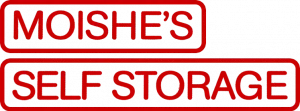Bronx, Self Storage Units
As autumn embraces us with its vibrant foliage and crisp air, it presents an ideal opportunity to prepare your summer gear for hibernation during the colder months. Sporting goods, camping equipment, and various other outdoor recreational items are susceptible to wear and tear if not appropriately stored. Here, we’ll explore the optimal practices for storing your seasonal items using self-storage units, so that when the sunshine and warmth return, your gear is ready for action.

Remember, while most self-storage units provide a secure and trusted space, they aren’t the ideal place to store irreplaceable items. However, for expensive gear and equipment that are dormant during the off-season, self-storage proves to be an extremely reliable option. Let’s delve into the best practices for storing your summer equipment and outdoor toys to ensure they survive the winter and emerge ready for use next year.
- Camping Storage Protocols: While tents are constructed to withstand harsh weather conditions, improper maintenance can lead to a shorter lifespan. A damp tent can become a breeding ground for mold, while constantly compressing tent poles may hasten their breakage. To ensure your tent stays intact during the colder months, follow these steps:
- Gently clean the fabric with soapy water to eliminate dirt and odor. Rinely thoroughly afterward. Air dry your tent completely by hanging it or spreading it out flat. Roll the dried tent and poles and store them in a pillowcase, not the original compact carrying bag, which can compress them too much during extended storage.
- Water Sports Equipment Maintenance: Water sports gear like scuba equipment, surfboards, and water skis require a different set of care practices than, say, a pair of tennis shoes. These items need to be rinsed to remove any marine debris, including salt, sand, and bacteria. Let them air dry completely afterward.
- Surfboards, in particular, require more extensive maintenance. They need thorough cleaning after use, and the board’s wax coating should be refreshed before winter storage. Here’s the process:
- Heat the surfboard in direct sunlight for about half an hour to soften the wax, making removal easier. Use a little WD-40 to remove all wax, dirt, and grime. Once the board is completely dry, apply a fresh layer of wax. Store surfboards in a breathable bag, similar to dive gear and water skis.
- Canoes and Kayaks: Canoes and kayaks, while designed to endure outdoor conditions, should not be stored outside when not in use. Exposure to sunlight can cause fading, while cold temperatures can damage the materials and joints.
Here’s how to prep your canoe or kayak for storage:
Remove all hatch covers and clean the inside thoroughly to prevent trapped moisture. Remove float plugs from a kayak to stop mold and mildew from forming inside. Use cockpit covers or breathable sheets to cover the inside, keeping it clean while promoting air circulation. Store canoes and plastic kayaks hulls-up, whereas composite kayaks can be stored on their sides or upside down. Avoid ground storage to prevent pressure points from forming and use a rack for proper weight distribution, which prevents warping.
Pool Toys and Floats: Pool accessories, particularly inflatables, often have unique shapes that make storage challenging. Here are some tips for their safekeeping:
Deflate all inflatables completely before storing them to prevent mold spore attraction. Ensure items are dry and debris-free to prevent scratching and tearing. Dust a layer of cornstarch or talcum powder over the items before packing them in plastic to prevent sticking. Avoid tight folding or rolling to prevent stress on the fabric and seams, which could render the toy unusable next season.
Proper storage is a crucial aspect of maintaining your outdoor recreational equipment, enhancing their longevity, and ensuring they’re ready to use when the season rolls around. A self-storage unit, when used properly, can keep your belongings safe and secure during the off-season. It’s not just about finding a space to put your gear; it’s about understanding the specific needs of each item and storing it accordingly. By following these storage best practices, you’ll be one step closer to another exciting summer of outdoor adventures.
